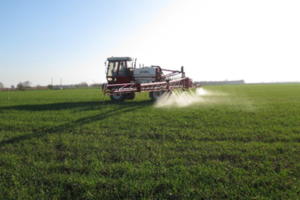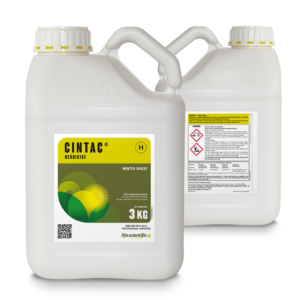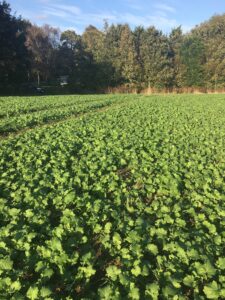Life in Life Scientific
January in Life Scientific Newsletter
Happy New Year to all our customers and colleagues!
Ideal weather and establishment conditions for many mean that generally crops look full of promise and hopefully there is lots to be positive about in 2023.
We have lots to celebrate in the year ahead. Two new products for the spring and potentially more to follow in the autumn. Several EAMU applications have gone into CRD to expand the use of our existing products and we are expanding our product range in other countries too.
As usual we can kick off the new year with product briefings before the soil warms up, things start growing and disease starts to develop.
If you’d like to hear from us, either in person or for a virtual product briefing please contact us using one of the methods at the foot of this newsletter.
Product News
Azoxystar, containing 250 g/l azoxystrobin is a reverse engineered Amistar. Azoxystar is a broad spectrum fungicide for use in many crops but is particularly useful in early spring for use in potato crops at planting.
One in-furrow application is allowed in potatoes. This should be 3.0 l/ha applied at planting in the furrow and provides useful activity to reduce the severity of soil-bourne diseases such as Stem Canker, Black Scurf and Black Dot.
Azoxystar should be applied to the soil, not the tubers before the tubers start to sprout.
For more information: AZOXYSTAR
To support the label extension for Azoxystar in potatoes at planting, Life Scientific have worked with Team Sprayers https://www.team-sprayers.com/ and Techneat Engineering http://www.techneatengineering.co.uk/ to confirm the application performance of Azoxystar through direct injection applicators designed for in‐furrow treatment.
- Calibrated on the Team Sprayers Compact 120 and Techneat In-Furrow V2
- Perfect results achieved from 3 to 5 bar
- Identical throughput compared to Amistar
- Consistent delivery for spray volumes from 50 to 150 l/ha using different output AZ or Lechler nozzles to suit the varying forward speed of different potato planters
- Azoxystar is easily cleaned from the system by standard washing procedures
- 10 replicated field trials conducted in UK and Northern France showed no significant differences in disease reduction levels between Azoxystar and Amistar when used in furrow in potatoes for the control of Stem Canker, Black Scurf and Black Dot.
Azoxystar can be used once at planting as an in- furrow application at a maximum dose rate of 3 l/ha. For more information see the website :AZOXYSTAR
Follow-up Weed Control In Winter Wheat
Where weeds have come through autumn herbicide programmes, a follow-up treatment may be needed in the New Year.
CINTAC, containing the highly active herbicides mesosulfuron-methyl and iodosulfuron-methyl sodium, is a good choice for a range of broad-leaved weeds and sensitive grass weed species, including bromes, sensitive Black-grass and Rye-grass, Rough-stalked and Annual meadow-grass.
CINTAC can be sprayed from 1st February and applies a higher dose of each active ingredient per hectare than products such as NIANTIC, Hatra or Horus. It must be mixed with PROBE or Biopower.
Cintac can be used up to a maximum rate of 0.5 kg/Ha where bromes are the major component of the weed spectrum. Cintac also targets volunteer oilseed rape, chickweed, mayweeds, wild oats and meadow grass, among others.
AS CINTAC contains sulfonyl ureas, it can only be tank-mixed or sequenced with other ALS herbicides which are specified on the product label, so it is important to be aware of what has previously been sprayed.
CINTAC is a contact herbicide and works best when applied to small actively growing weeds. Whichever weed is being targeted, application is critical. This is especially true when spraying small grass weeds after the beginning of February.
Applications expert Tom Robinson conducted trials for Life Scientific to investigate how to get the most from products containing mesosulfuron-methyl and iodosulfuron-methyl-sodium, such as CINTAC.


The replicated and large-scale field trials showed that boom height and nozzle choice were key to getting the best performance from the herbicide. Black-grass spray coverage fell from 26% at 50 cm nozzle height to 19% at 100 cm, a drop of 35%. The ‘Best Application’ is the one which will give the best efficacy under the widest range of conditions, whilst also managing drift. Tom advises keeping boom height to no more than 50cm, maintaining sprayer speeds at 12kph and only using CINTAC with approved adjuvants PROBE or BioPower.
Don’t Forget Light Leaf Spot
Crops which were not treated for Light Leaf Spot in the autumn will need treating soon, before disease establishes. Susceptible varieties
which
received an autumn treatment, or where high disease pressure is predicted,may also need treating and it is worth checking crops carefully early in the month for signs of disease.
Consider using a product containing prothioconazole such as AURELIA. ESKER or ORASO PRO, which contain both prothioconazole and tebuconazole and will control Light Leaf Spot, with the tebuconazole having some growth regulatory activity on the crop.
See the labels for dose rates and timings.


